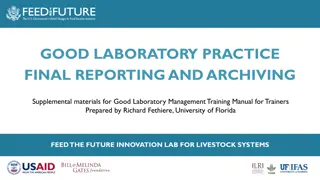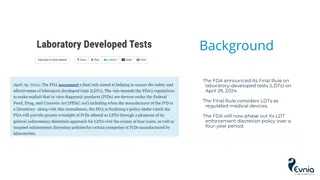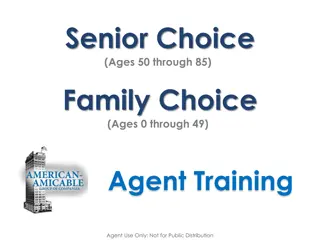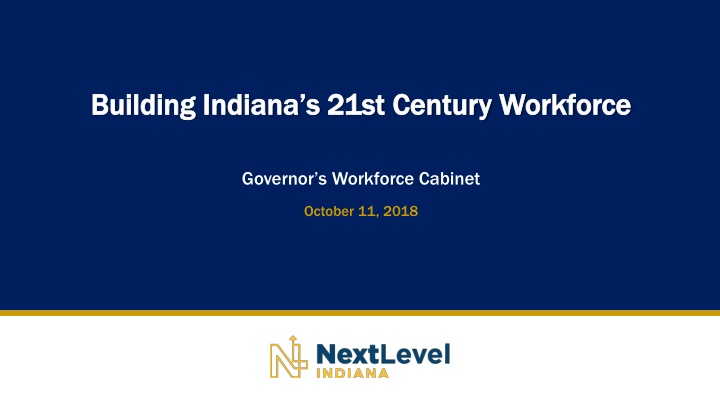
Empowering Indiana's Workforce for the 21st Century Challenges
Addressing Indiana's workforce challenges and initiatives, including low post-secondary attainment rates, lack of job preparedness, and the need for career navigation systems. Reports from Governor's Workforce Cabinet, CICP and Fairbanks Grant findings, and research on student perceptions highlight the focus on practical skills and education for economic growth.
Download Presentation

Please find below an Image/Link to download the presentation.
The content on the website is provided AS IS for your information and personal use only. It may not be sold, licensed, or shared on other websites without obtaining consent from the author. If you encounter any issues during the download, it is possible that the publisher has removed the file from their server.
You are allowed to download the files provided on this website for personal or commercial use, subject to the condition that they are used lawfully. All files are the property of their respective owners.
The content on the website is provided AS IS for your information and personal use only. It may not be sold, licensed, or shared on other websites without obtaining consent from the author.
E N D
Presentation Transcript
Building Indianas 21st Century Workforce Building Indiana s 21st Century Workforce Governor s Workforce Cabinet October 11, 2018
Indianas Workforce Challenge Indiana s Workforce Challenge Only 41.9% of Hoosiers have attained a post-secondary certificate or diploma, ranking us #42 in the nation (Lumina Foundation, A Stronger Nation report) Roughly 540,000 Hoosiers have begun college but have no credential to show for it (Lumina Foundation, A Stronger Nation report) Only 38% of surveyed Indiana college alumni say they were well prepared for life outside of college (Gallup-Purdue Index Report, Great Jobs Great Lives) Only 31% say they are fulfilled in their current work (Gallup-Purdue Index Report, Great Jobs Great Lives) Only 15% say they received help finding a job after graduation (Gallup-Purdue Index Report, Great Jobs Great Lives)
Governors Workforce Cabinet: Reports Governor s Workforce Cabinet: Reports Reports will be submitted on October 31, 2018 for: Reports will be submitted on October 31, 2018 for: Designed Career navigation system for our state by Workforce Funding Report College and Career Funding Report Career and Technical Education model for schools
CICP and Fairbanks Grant Initial Findings CICP and Fairbanks Grant Initial Findings
CICP Baseline Activities Set the Stage Baseline Activities Set the Stage Goal Goal Become a people and state that value education as essential to a prosperous and stable quality of life and economic growth.
CICP Research Validates Anecdotes About Leaky Pipeline Research Validates Anecdotes About Leaky Pipeline Thematic Perceptions Across All Research Thematic Perceptions Across All Research Students want practical skills.More than half of students believe that formal education doesn t relate to real life. Some employers agree. Awareness is lacking. Parents and students are not aware of high school and post-secondary paths beyond traditional classroom instruction and subjects. No, little, or mixed perceptions of CTE. Anxiety is high. Students and parents feel pressure to make the right decision, and feel paralyzed by the amount of information to know and its complexity. College is default. Students suspect that a 4-year degree isn t needed to get a good job, but most expect to attend college anyway; they see few options. Cost is hindrance. The expected cost of a 4-year degree keeps students from enrolling.
CICP Research Provides New Insights Research Provides New Insights Thematic Perceptions Across All Research Thematic Perceptions Across All Research Few perceived opportunities. Studentsdon t believe Indiana has an abundance of jobs. Expectations differ. Parents, teachers, and employers differ about who they believe bears the responsibility to teach and communicate the value of education to students. Education is a personal value. Most people believe they value education. Most do not believe the state values education. Teachers feel underutilized. Teachers want to teach critical thinking and problem solving skills but feel hamstrung by lack of control and distrust of the system. Teachers are skeptical. Teachers do not believe they are providing children what they need.
CICP Changing These Perceptions Requires Long Changing These Perceptions Requires Long- -term Effort Communication & Messaging: Phase I Communication & Messaging: Phase I term Effort Objectives Persuade students that education beyond high school is both relevant and critical to their success There are multiple pathways to a post-secondary education Timeline: Phase I is 2 years with sustained effort over a decade Audiences Backbone campaign lays the foundation, targets all demographics across state Targeted messaging to have rural and urban focus, prioritized as follows: 1. Students 14 20 years old 2. Parents and educators to be leveraged as influencers, with priority parents being those with less education and lower incomes Employers engaged to assist in relating education to practical skills
Career Navigation and Coaching System Career Navigation and Coaching System K K- -12 Students 12 Students
Career Navigation: K Career Navigation: K- -12 Students 12 Students An effective Career Navigation System will require engagement from: Parents/Adults Schools local and state support Employers School Student In Indiana, strengthening our workforce means all of us have the responsibility to support students as they prepare for their future careers. Parents/ Adults Employers
Career Navigation: K Career Navigation: K- -12 Students 12 Students This navigation system will create a seamless, constant This navigation system will create a seamless, constant connection for students from K connection for students from K- -12 to postsecondary/career. 12 to postsecondary/career. GRADES Engage Explore Experience K-5 6-8 9-12
Engage Engage Engage: For grades K-5, in order to focus on engaging students earlier in their learning to connect education and careers/jobs, the recommended items for the menu are: Research a career/job each year Model a career for a class presentation each year Demonstration of Employability Skills Standards, developed by Department of Education in conjunction with the Department of Workforce Development and the employability skills standards committee each year as described in the standards Teacher led What is a Job (& its purpose) lessons to students each year Establishment of a parent participation event through Career Day/Night in grade 5 Assignment of each student to a classroom job which utilizes employability skills each year Teaching project-based learning each year Engage Experience Explore K-5 9-12 6-8
Explore Explore Explore: Students need a personal connection and the ability to explore a future that fits their skills. Without this connection students may disengage or worse, stop trying. The menu for grades 6-8 includes: Create a graduation plan that will be saved electronically and can be revisited at any point through graduation and beyond but will be reviewed each year (this graduation plan will be discussed in further detail later in the report) Parent/guardian review of a student s plan Demonstration of Employability Skills Standards, developed by Department of Education in conjunction with the Department of Workforce Development and the employability skills standards committee each year as described in the standards Engage Explore Experience K-5 6-8 9-12
Explore Explore (continued): Student completion of and teacher use of a career exploration tool (this tool will be discussed in further detail later in the report Scheduled visits to employers in at least each key economic sector each year Hands-on, engaged/interactive industry experiences (ex: JA job spark) grade 8 Teacher participation in teacher externships to integrate knowledge in to classroom Employer participation in mentoring students in mentor program each year Engage Explore Experience K-5 6-8 9-12
Experience Experience Experience: Students expand the depth of their knowledge and skills gained through experiences before transitioning to postsecondary or a career in grades 9-12. A menu for 9-12 includes: Enrollment in a revamped college and careers course with self-efficacy components or an introductory career and technical education course grade 9/10 Transitions Course that includes financial literacy grade 11/12 Student participation in a career day where they present their career and provide supporting materials including resumes and receive real feedback on their career and skills from local employers and community leaders to allow students to hear their strengths & their areas of growth/improvement in a personal way grade 10 Engage Explore Experience K-5 6-8 9-12
Experience Experience (continued) Schools intentionally drive towards Dual Credit/Enrollment Courses for postsecondary credit and Career and Technical Education training embedded with certificates or degrees with local postsecondary partners Participation in Work-based, Service-based or Project-based Learning determined within a graduation pathway Demonstration of Employability Skills Standards, developed by Department of Education in conjunction with the Department of Workforce Development and the employability skills standards committee each year as described in the standards Mentorship programs with business and community leaders to give students unique insight on different experience, including the utilization of electronic tools for sign-up based on student s interests each year Engage Explore Experience K-5 6-8 9-12
Experience Experience (continued) Teacher and Counselor participation in externships and the translation of those experiences into lesson planning each year Student participation in internship opportunities grades 11 and 12 Student participation in Apprenticeship/Earn and Learn opportunities each year Summer learning camps and student participation in summer bridge programs and related experiences that prepare recent high school graduates to transition successfully after high school to the postsecondary pathway the student chooses. grades 11 and 12 Engage Explore Experience K-5 6-8 9-12
Additional Recommendations Additional Recommendations Career Navigation and Coaching System Career Navigation and Coaching System Professional Growth Points for Teachers, School Counselors, and Administrators that require certain points only be acquired through: an externship; attending programming provided by the state or business and industry that detail local employer needs, and provide resources for how schools and employers can work together to promote career navigation and resources for students Preparing for Colleges and Careers/Postsecondary Transitions Course Require Preparing for College and Careers or an Introductory CTE Course. 9th or 10th grade year Consider Adding a Postsecondary Transitions Course Graduation Plan The current Graduation Plan, outlined in IC 20-30-4, should be tied to accountability and amended to include additional components such as, but not limited to, a career aptitude assessment, work-based learning, expanded exploration of certificate, two-year, and four-year postsecondary options, and postsecondary goal planning
Additional Recommendations Career Navigation and Coaching Additional Recommendations Career Navigation and Coaching System System Local Career Coaching Grant model (LCCM) Will be established by the Governor s Workforce Cabinet in full and formal consultation with a committee of industry associations, state and local chambers of commerce, teacher, counselor, administrator, and school associations, philanthropic leaders, local and state elected officials and other interested stakeholders Grants will be employer-driven, but teams will be required to have explicit participation from public and private schools and districts, philanthropy, the local workforce system, sector groups, and other local stakeholders. At least eight grants (four in each program year under the next budget) and a total of four million being awarded to various regions of the state.
Additional Recommendations Career Navigation and Coaching Additional Recommendations Career Navigation and Coaching System System Career Exploration Tool Recommendation to Evaluate options through an RFI and RFP and consider including: Aptitude in key career-related areas, Personality survey (ex: Myers Briggs/Holland Code)
Career Navigation Career Navigation Adults Adults
Career Navigation Career Navigation - - Adults Adults An effective Career Navigation System for adults will require engagement from: Postsecondary Education and Training Providers Employers and Local Workforce Boards State Post- secondary Education and Training Providers Each partner must provide current and relevant information to the market today and assist in developing Life-Long Learning. A complete inventory must be conducted of the adult system and survey of adults using the system to improve use and results. Employee/ Student Employers/ Local Workforce Boards State 18-24 25+
SKILLFUL INDIANA SKILLFUL INDIANA
Skillful Indiana: Career Coaches Impact Initiative Career coaches play a pivotal role for many job seekers looking for employment and a better career path. Skillful Indiana will strengthen the skills and reach of career coaches across the state through a coaching corps and community of practice modeled on Skillful Colorado s successful initiative. Skillful Indiana will provide resources to assist coaches in adapting to the impact of technology and a changing economy. INITIATIVE GOALS The comparative strengths and resources within IN s coaching community are brought together in an easily navigable whole, drawing upon coaching efforts within K-12, higher ed, WorkOnes, businesses, and community-based non-profits Career coaches have access to data and technology and understand how to apply them to effectively place job seekers on better career pathways New and expert career coaches are members of a peer network and actively share best practices through an online platform with each other, and civic and business leaders Career coaches work together to apply their expertise to solve statewide workforce development challenges Career Coaches Launch the Indiana Governor s Coaching Launch the Indiana Governor s Coaching Corps, Corps, increasing the effectiveness of career coaches from public workforce centers, employers, higher ed, non-profits, and K-12 Create a virtual coaching community of Create a virtual coaching community of practice practice to share best practices and upskill those at the frontlines supporting Indiana job seekers Develop standards of quality for career Develop standards of quality for career coaching coaching to strengthen the system for future economic shifts and downturns SKILLFUL RESOURCES Skillful Colorado Governor s Coaching Corps and Community of Practice curricula and online platforms, tailored to Indiana Launch the SkillfulIndiana Governor s Coaching Corps, advancing the skills of top career coaches and supporting them as they examine and develop recommendations for specific workforce development challenges Launch an online Skillful Indiana Coaching Community of Practice as a go-to resource for Indiana career coaches and a community connecting those dedicated to workforce development across regions and sectors Working with state and coaching stakeholders, develop standards of quality for career coaching that draw upon best practices and tools from across the system APPROACH
DISCUSSION DISCUSSION
Career and Technical Education Career and Technical Education
CTE Challenges CTE Challenges Flexibility and Accountability Strategic Alignment Consistent Delivery Funding Opportunities Exploration Elevating CTE Other K-12 Accountability Model Real World Career Readiness Recommendation
CTE: Flexibility and Accountability CTE: Flexibility and Accountability These recommendations 1. address the need for more flexibility in partnering with CTE providers in the local community. 2. address the need to outline requirements for that flexibility. 3. outline that CTE program accountability for local schools needs to be addressed. 4. identify additional areas to investigate further: a. Licensure and Collective Bargaining for CTE instructors b. Roles and responsibilities throughout the CTE system
CTE: Strategic Alignment CTE: Strategic Alignment These recommendations 1. consolidate the strategy and policy around CTE to the Governor s Workforce Cabinet. Currently, there is not a coherent vision for CTE across the K-12 and postsecondary space. As the GWC considers moving forward with Combined WIOA state plan, aligning state and federal resources in a more comprehensive way is of the utmost importance.
CTE: Delivery of Programs CTE: Delivery of Programs These recommendations 1. set a definition for a CTE Concentrator. 2. suggest utilizing a single set of sector employers to analyze the skills and competencies being taught across K-12 and postsecondary CTE. 3. outline that every high school CTE concentrator should graduate with one year of college complete. 4. outline that common assessments need to be developed to be used across CTE programs.
CTE: Funding Opportunities CTE: Funding Opportunities These recommendations 1. create a new tiered funding methodology. 2. remove foundational courses from the CTE funding formula. 3. give consideration to the percentage of CTE funding that actually goes into CTE. 4. incentivize student outcomes.
CTE: Career Exploration CTE: Career Exploration These recommendations 1. align with those made by the Career Coaching and Navigation team.
CTE: Continuing to Elevate CTE CTE: Continuing to Elevate CTE These recommendations 1. outline the continuation of the CTE Action Team. 2. charge the Team with input and development of the state Perkins Plan. 3. consider expansion of team membership to align to other state and federal programs.
CTE: Other Recommendations CTE: Other Recommendations These recommendations 1. ask the State Board of Education to consider new metrics for state K-12 accountability. Such as: a. Career Navigation b. Postsecondary Placements in education, employment, and enlistment 1. This aligns with how CTE programs will be measured under Perkins V. c. Work-based Learning d. On-Track 2. outline for the legislature why the Real World Career Readiness program is not necessary.
DISCUSSION DISCUSSION
College and Career Funding Recommendations College and Career Funding Recommendations
Recommendations Recommendations - - College and Career Funding College and Career Funding 1. Expand Pell eligibility to shorter-term certificates. Providing Pell for shorter term programs and allowing a wider selection of providers will expand the options available for students. Currently, Pell Grants are limited to programs which provide at least 600 clock hours, 16 credit hours or 24 quarter hours over a minimum of 15 weeks It has been proposed to expand Pell Grants to programs which have at least 150 clock hours of training over 8 weeks. The funding team supports that Pell eligibility should be expanded to certificate programs which: Have at least 150 clock hours over a minimum of 8 weeks, and Are embedded in longer-term certificates or lead to industry-recognized credentials
Recommendations Recommendations - - College and Career Funding College and Career Funding 2. Change the Definition of Full Time under Pell to 15 credit hours. Students only need to take 12 credit hours to receive their maximum Pell award The funding team recommends that a bonus should be provided for students that attempt 15 credits per semester 3. Allow Pell to apply to high school students who have not yet graduated but are taking college level courses. The PROSPER Act would allow for students in high school who have not graduated to be eligible for financial aid to begin courses towards their degree while still in school 4. Expanding Access to In-Demand Apprenticeships. This must include other work-based learning opportunities Especially for small and mid-sized businesses and diverse industries
Recommendations Recommendations - - College and Career Funding College and Career Funding Benefits to the State Financial Aid programs 21st Century Scholarships and Frank O Bannon Scholarships metrics must be reviewed by the Commission on Higher Education to determine if the students that have access to the programs should be expanded and if the metrics are limiting the number of students who could benefit from the programs. Some of the students participating in the programs with new requirements have yet to graduate. The programs with the new requirements are seeing improved graduation rates and salary increases post-graduation. Standardized and frequent reviews for improvements in the program should be conducted and if there is no improvement action should be taken.
Workforce Ready Grants Workforce Ready Grants Expansion of this program. Additional funding sources to increase the ability for Hoosier to utilize this program. Review for expansion to programs that qualify for workforce ready grants.
DISCUSSION DISCUSSION
Workforce Funding Recommendations Workforce Funding Recommendations
Workforce Funding Overview Workforce Funding Overview Overall Assessment: 1. Currently, there is no standard way to determine ROI or accountability across the various workforce programs. 2. While programs may be effectively moving more Hoosiers into training and careers, there is some duplication of efforts across programs and agencies. 3. More control could be given to local communities to run programs if there were a better method for determining accountability. 4. There is a general lack of awareness from individuals and employers surrounding the existence of state and federal programs that help upskill/reskill and connect talent.
Workforce Funding Recommendations Summary Workforce Funding Recommendations Summary Redirect Funding: 1. WorkINdiana Certificate Program 2. CTE Innovation Fund Better Alignment Across Agencies: 1. Hoosier Initiative for Re-entry (HIRE)
Workforce Funding Recommendations Summary Workforce Funding Recommendations Summary Enhance Programs: 1. Employer Training Grant Program a. Increase the funding dedicated to this program b. Require outcomes such as: a. Credential attainment b. Wage gain 2. Skills Enhancement Fund a. Require outcomes such as: a. Credential attainment b. Wage gain
Workforce Funding Recommendations Summary Workforce Funding Recommendations Summary Additional Recommendations 1. Initiate a Combined WIOA planning process to align federal and state funding streams such as: a. SNAP/TANF IMPACT b. Perkins (Career and Technical Education) 2. Develop common metrics across all workforce programs to better determine ROI and common accountability. For example: a. Credential attainment b. Employment rate percent increase c. Wage gains 3. Continued Review of Additional Workforce Programs a. Use the development of the combined plan to review other federal workforce programs b. Look for more opportunities to provide more funding to local communities
DISCUSSION DISCUSSION

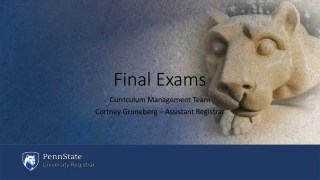
![READ⚡[PDF]✔ Yup I'm Dead...Now What? The Deluxe Edition: A Guide to My Life Info](/thumb/20463/read-pdf-yup-i-m-dead-now-what-the-deluxe-edition-a-guide-to-my-life-info.jpg)



